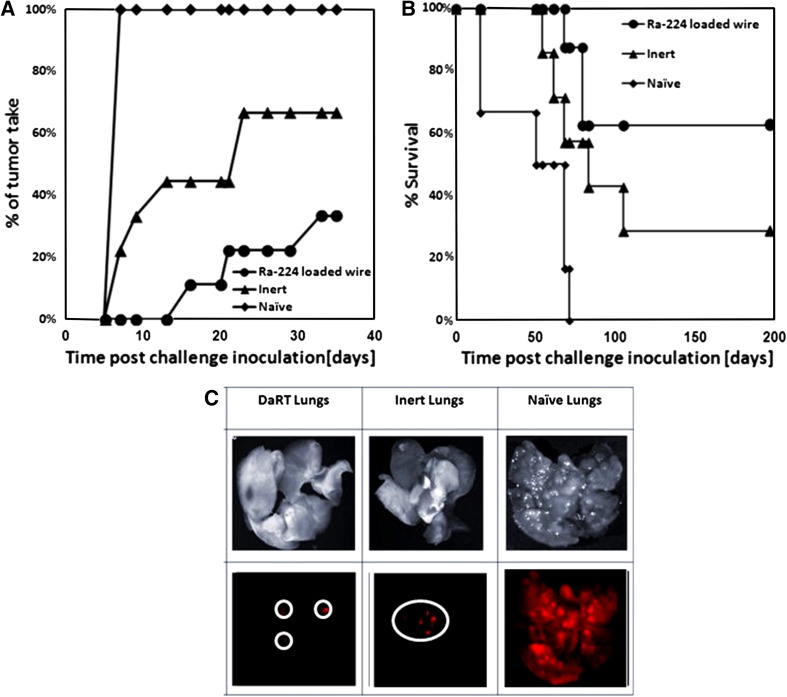Fig. 2.
Effect of tumor ablation by Ra-224-loaded wires on the resistance to a subcutaneous or i.v. CT26 tumor rechallenge. a CT26 tumor-bearing mice were treated with either intratumoral Ra-224-loaded wire (40–50 kBq/wire, n = 8–9) or with an inert wire (n = 7–9) followed by the removal of residual tumors 14 days after the treatment. Treated animals were injected again s.c. with 5 × 105 tumor cells. Normal mice were injected s.c. with 5 × 105 CT26 tumor cells at the same time (naïve, n = 9). The percentage of tumor take against time after challenge inoculation is presented, P (T-test) <0.05 (at all points, Ra-224-loaded wire vs. inert or Naive). b Treated animals were injected i.v. with 2 × 106 tumor cells. Naive mice were injected i.v. with 2 × 106 CT26 tumor cells at the same time (naïve, n = 6). Survival of mice is shown as a Kaplan–Meier curve. P (two-way ANOVA without replication) <0.05 (at all points, Ra-224-loaded wire vs. inert or naïve). c Maestro-CRI lung imaging of mice injected with CT-26 mCherry-labeled cells (as described in B): (1) lungs in bright field, (2) fluorescent image of lungs

